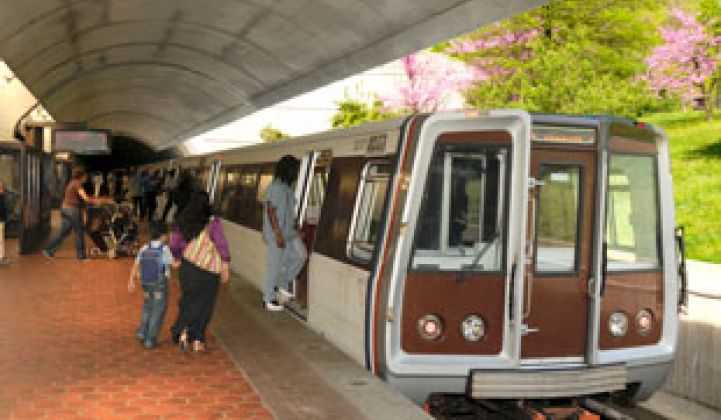The payback time for light-emitting diodes has dropped considerably in recent years in certain commercial and municipal applications. But for many companies and cities, making the switch to LEDs still requires too much money upfront.
To get around the sticky issue of multi-year paybacks, Philips has just offered its first turnkey lighting-as-a-service model to the Washington Metropolitan Area Transit Authority. WMATA will upgrade more than 13,000 lighting fixtures at no upfront cost and pay for the project, plus a ten-year maintenance contract with Philips, through the $2 million savings the LEDs will provide annually.
“This is a very exciting project,” said William McShane, director of sales for the sustainable lighting division at Philips Electronics North America and project lead on the WMATA program.
“It’s truly the first performance contract for Philips.” Installation will begin next spring and is expected to take about one year.
Although other industries operate on performance contracts, lighting manufacturers traditionally have not. Philips has the advantage of being a vertically integrated lighting company with a long history -- one that will likely be around in future decades to service contracts. Philips and other lighting incumbents are looking for ways to retain market share as LED startups, such as Cree, reshape the lighting landscape.
Savvy building owners interested in upgrading lighting or other energy retrofits are increasingly looking for options that offset or avoid a capital cost. On-bill financing is gaining traction, as is PACE commercial lending and utility energy-efficiency programs, which are more often offering rebates for LEDs. Leasing, which also cuts out upfront cost, has unlocked the rooftop solar market in the U.S. and is also offered by some energy efficiency companies, such as Powerhouse Dynamics.
“With digital lighting systems, we really need to break with conventional thinking and look to the services and delivery models of the software industry to understand the future of lighting and how we can remove one of the greatest barriers to adoption: the upfront costs,” Bruno Biasiotta, president and CEO of Philips Lighting Americas, said in a statement.
The Washington Metro turned to Philips because it wanted to brighten up its parking garages while meeting its sustainability goals. The switch to LEDs will reduce energy costs at the garages by 68 percent. But like many cash-strapped organizations, it did not have the upfront capital, despite the energy and maintenance savings. The savings from the maintenance alone is expected to be about $600,000 annually.
One of the drivers for LEDs in parking garages and street lights is the quality of light and the ability for networking. The Philips Luxeon LEDs will be networked via ZigBee and will adjust to daylight and learn the patterns of each garage to adjust when they operate, as well as alert the maintenance team if a bulb burns out.
McShane said Philips was already in talks with other commercial entities and municipalities for similar style contracts. “This is driven by the market,” he said. “They want LEDs and controls, but they don’t have the knowledge or the in-house resources” to develop the end-to-end system and get financing. Philips wants to be the one-stop source that offers the financing, technology, installation and maintenance.
Although this is just one project, Philips does not expect it to be a niche offering, according to McShane. “This is our model moving forward.”



